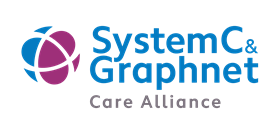Guy Lucchi on how the CareFlow electronic patient record can help clinicians provide safer and more efficient care while spending more time with patients
One thing that clinicians want more of is time. Time with their patients. Time to do their job to the highest possible standard. However, with the country still recovering from covid-19, they are under more pressure than ever, and how they would like to work versus the reality of waiting lists and staff shortages, can be very different.
Sponsored by
Fortunately, one thing that has picked up pace over the past few years has been digital transformation – and it is now firmly on the national agenda. In the government’s “A plan for digital health and social care,” for example, several objectives were laid out, including the aim for all integrated care systems and their NHS trusts to have core digital capabilities, including electronic health records, in place by March 2025.
According to the document, “success will allow frontline health and social care staff to spend less time on administrative tasks and more time delivering personalised care,” music to the ears of those keen to spend more time with the patients that most need their care. Of course, there have been many attempts to digitally transform the health and social care system, but with leaps in technological innovation, and our increasing understanding of its potential, sector-wide change could now be possible.
Leading by example
St Helens and Knowsley Teaching Hospitals Trust, which has just entered the final year of its three-year digital strategy, is one organisation that is proving that technology can have a very real impact. The tools it has put in place are enabling staff to spend significantly more time with patients, while also helping clinicians provide even safer, more efficient care.
Amongst other initiatives, the introduction of digital nursing forms has saved 20 minutes of admin time per admission, freeing up thousands of hours per year that can now be spent with patients. There have been more than 2.3 million digital patient observations, and 765,000 digital handovers have been completed. 1,200 mobile devices are keeping clinicians throughout the trust connected and enabling them to access and share crucial patient information on the go.
According to Celia Jukka, ward manager on the diabetes and endocrinology medical ward, there have been noticeable time saving benefits and positive feedback from patients and staff alike.
“We now have 90 percent of our documentation digitised, which is so beneficial for the ward as everything is in one place, and everyone – nursing staff, doctors, visiting staff – can see that it’s online. The patients have responded brilliantly as they experience such good continuity of care, and they also appreciate the fact that nurses have more time to spend with them.
“Also, if you move to a new ward all the information is on the computer so that it can be followed up.”
Sue Redfern, director of nursing, midwifery and governance, adds:
“I’ve seen great progress with digitisation of the nursing admission form completed by analysis when a patient arrives on the ward and the social history and activities of daily living form. This is used across different departments and teams to start planning for when a patient is to leave hospital and go back to their own home environment. We are reaping great benefits from this, particularly in saving nursing and therapist time compared to manually completing the different paper forms. This means much more time can be spent with patients instead of administration tasks.”
Putting the right tools in place – with a clear vision for the future
St Helens and Knowsley is a high-performing trust, rated outstanding by the Care Quality Commission, with its sights now set on HIMSS level 7, the highest global symbol of an organisation’s dedication to digital transformation in healthcare.
The trust has been using System C’s CareFlow electronic patient record since 2018. CareFlow EPR is a full clinical and administration system that can handle every aspect of patient care, safety, and flow – including e-observations, care planning, ordering, theatre management, clinical collaboration, orders and results, clinical narrative, noting, patient administration systems, maternity care, contact management, emergency care, medicines management, remote patient monitoring/virtual wards, and more.
Since its launch, the trust has rolled out several modules, including CareFlow Vitals, an electronic observation and decision support system; CareFlow Connect, an integrated clinical communication platform; CareFlow Workspace, which provides a single view of essential clinical information on a mobile or desktop, with single sign on to integrated systems; and CareFlow EPMA, an electronic prescribing and administration system.
“I’m delighted to see all the progress that’s been made in the last 12 months on our digital maturity programme that has allowed our clinicians better access to information about their patients,” says medical director, Peter Williams. “We are working more efficiently, and it has empowered everyone to further improve the quality of care that we deliver.
“As we move into the last 12 months of the trust’s digital strategy, we will continue the journey we started in 2020 - working together to deliver more innovative digital technology to support five-star patient care.”
For more information on how System C’s solutions, visit the website.





























